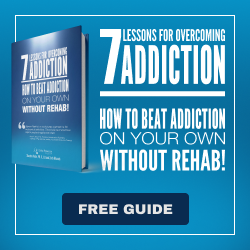What Can a Teenage Murder-Suicide Tell Us About Addiction?
The tragic events in a Washington high school last Friday underline that the most severe addiction of all is not what most people would imagine.
We are still exploring the motivations behind Seattle-area high school student Jaylen Fryberg’s suicide and shooting of four other students, two of whom have died, last Friday. All involved were teenagers.
Why would Fryberg—who was popular and socially integrated, unlike the typical profile of mass killers—shoot these teens (two of whom were male cousins, two girls)? We don’t know. But we have learned this:
Fryberg had a very active Twitter account that included many tweets and photos referring to a girl he was dating. But on July 20, he stopped tweeting for more than a month, resuming in late August with a series of heartbroken tweets.
“I hate that I can’t live without you,” said one. Another said: “Tell me what your plan is…. You can’t make a bond with anyone like the bond me and you have right now…. Tell me what your going to do…”
It seems that one of the girls who was shot and killed was the object of these tweets: “Jarron Webb, 15, said the shooter was angry about a romantic relationship he was involved in, and that the girl was one of the people shot.”
Also being reported is that Fryburg confronted one of the boy cousins he shot: “I heard he asked her out and she rebuffed him and was with his cousin,” 9th-grader Bella Panjeli reportedly said. “It was a fight over a girl.”
The Fryburg story is far from clear. But so far several different sources repeat the spurned lover scenario. If this is true, it would be far from unusual—quite the reverse. Here is another—completely unrelated—story:
Unrequited love led an upset teenager to kill his girlfriend on a sidewalk not far from San Leandro High School before he took his own life, police said Friday.
Investigators said 17-year-old Alejandro Fajardo shot Nayanci Gonzalez five times in the back with a pump-action shotgun Thursday morning because the 14-year-old had made it clear to him that she wanted to end their relationship.
Why would a human being—or especially a teenager—want to kill and/or to die after losing a girlfriend/lover?
It is rare indeed for a person, teen or otherwise, to kill themselves when quitting smoking, drinking, or drugs. Apparently, the devastation that people feel due to these events is minor compared with what many people, and young people especially, feel after a romantic involvement ends.
What do they feel? As though their lives have ended, that nothing more can matter to them, that they are deprived of all possibility of life and happiness. Archie Brodsky and I described this set of emotions in Love and Addiction.
What does this tell us about withdrawal? That withdrawal is measured by the awfulness of people’s feelings—there is no other “withdrawal test.” Very often, people display nothing other than behavioral manifestations of withdrawing from smoking or heroin, and we rely on their descriptions of their feelings to assess the severity of their “withdrawal syndrome.”
Fryburg said of his feelings, “I can’t live without you,” a sentiment which in itself he hated. What other withdrawal produces such a complete sense of despair and emptiness?
And, so, when you ask what is the most severe of addictions, if you mean the addiction that causes the most pain and suffering to leave behind, that answer is obvious: Love is the hardest addiction.
Article by Stanton Peele for substance.com





